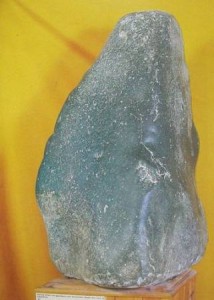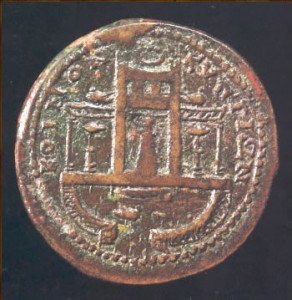A couple of weeks ago I was honored to have been asked to lead a Solar Cross devotional. It was a really lovely event and I so enjoyed all the people I met. What a fine group of cool people! If you get the chance to attend any of the devotionals, you should. Given the mission of Solar Cross to engage in social justice, I thought I might lead a bit of an exploration to Aphrodite Pandemos—Aphrodite of All the People, one of my favorite forms of her.
Aphrodite Pandemos is frequently set in distinction to Aphrodite Urania, Heavenly Aphrodite. Platonically derived material, particularly the type we have already explored that emphasized transcendence over embodiment and placed a moral good on escaping materiality, set the two forms against each other, Pandemos representing the coarser sexual instincts of humanity, while Urania represented a higher, more evolved sense of love. Meh. Plato is why we can’t have nice things. But anyway… in ancient cult practice, which is frequently distinct from the literary tradition, Pandemos represented the civic body, the union of all the people. Do we perhaps see echoes of her here?
“We the People in order to form a more perfect union…”
Because most people think of Aphrodite predominantly as the Goddess of Sexy Fun Times, her civic role may seem a bit strange. But Pandemos really shows off wonderful glimpses of the nature of Aphrodite and she is lusciously rich. Most famously, we see Pandemos in Athens representing the ideal of the polis, of the body of people coming together which is key to the coherence of any society. In a previous essay I wrote of Aphrodite as a Goddess embodying ideas of mixis, or the mingling of bodies, and in my view her civic role displays this characteristic as well.
Pandemos is also related to Peitho, Goddess of Persuasion. Sometimes Peitho was a Goddess on her own, sometimes an epithet of Aphrodite. While we certainly can apply persuasion to the art of seduction (and the possibility of sexy fun times), persuasion is also something that lawyers and judges need to command (Aphrodite was beloved of judges), and while we frequently attribute that skill to, say Hermes, Pandemos and Peitho suggest that there may be more to the art than just mastering verbal acuity. And why would this skill be important? Because persuasion and rhetoric, when deftly applied, can set the foundation for a healthy civil body, one that comes together, in love, for the good of all people. These are, perhaps, the root of democracy.
Pandemos also welcomes all-comers, even when they do not constitute a traditional civic body as one would have found in Athens. Andrew Scholtz suggests that the cult of Aphrodite Pandemos at the Egyptian port town at Naukratis reflected the need for diverse peoples traveling through an area to feel welcome and supported, and that hers was a space where all could worship, as opposed to temples which may have imposed restrictions on who can worship based on place of origin. Scholtz notes that here Pandemos played a cosmopolitan role for merchants, seafarers, travelers and prostitutes, serving multiple populations in a locality, constantly shifting, strangers coming and going.
For the Solar Cross devotional I wanted to focus on how each of us is an embodiment of Aphrodite Pandemos, and how when we make love the center and primary driver of our action, the body of the people becomes strong and beautiful. I took for the basis of this devotional the idea that sustained relationship or encounter with deity is a contract. We get, but we must give in return. And as we are each instances of Pandemos, I first asked everyone to look in the mirror and to offer to ourselves as Aphrodite Pandemos, in that way reminding us that we are already Goddess, knowing that we are her individually and that together we are One. Breathing as one, feeling each other as one body, knowing that all we do touches some other being, all other beings, I invited us to explore what would happen if, when we acted, we were always aware of our interconnectedness, or unity? I then asked everyone to consider one concrete thing they could do in the next 30 days to give back to their community, and then we charged it up. This act to me is an offering to the Goddess, to her as the people and to ourselves. We are all one and the same.
I pledged to donate to a domestic violence charity, so I gave some funds to A Safe Place, Inc. What will you do in divine service for the good of all?
Reference
Andrew Scholtz “Aphrodite Pandemos as Naukratis” in Greek, Roman and Byzantine Studies 43 (2002/3) pp. 231-242.

